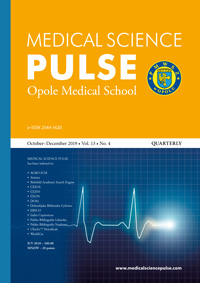The effectiveness of therapeutic massage in treating back pain: a case report.
The effectiveness of therapeutic massage in treating back pain: a case report.
Author(s): Agata Mroczek, Zuzanna WybraniecSubject(s): Health and medicine and law
Published by: Państwowa Medyczna Wyższa Szkoła Zawodowa w Opolu
Keywords: back pain; therapeutic massage
Summary/Abstract: Background: Spinal pain is a common problem in developed societies. In recent years, more and more people have been found to complain about spinal pain. Therefore, it would seem that back pain remains a major problem, a burden for the patient, the family, and the economy. If the pain is severe, it can cause difficulties with performing even the most basic activities of everyday life. The quest for methods to reduce this complaint may contribute to improving the quality of life for many people. One of the more commonly chosen forms of therapy for back pain is therapeutic massage. Massage therapy has a long history with back pain treatment and has been found to produce various beneficial effects that are associated with endorphin release. It can also enhance local blood flow which could increase the efficacy of local pain mediators. Aim of the study: The aim of the study was to evaluate the effectiveness of therapeutic massage in the treatment of back pain in a 69-year-old woman. Case report: The subject was a 69-year-old woman reporting pain in the cervical and lumbar segments of the spine, BH = 154.2 cm, BM = 90.0 kg, BMI = 37.85 k/m² (obesity), waist circumference = 114.1, hip circumference = 118.2 cm, WHR = 0.96 (android obesity). The 11-point VAS scale was used in the assessment of her pain, where 0 means no pain, and 10 unbearable pain. The Laitinen Pain Scale (LPS) is a questionnaire which examines the nature of pain in four areas: the intensity of the pain, how frequently the pain occurs, the application of painkillers, and limiting motor activity. Before starting the therapy and immediately after the end of the therapy, researchers conducted a physical examination which included taking measurements of spinal mobility using the SFTR method. Before the first treatment, researchers conducted an interview was conducted about the need for the massage. 10 massages were performed after 60 minutes each, and were done every other day. Researchers performed a pain assessment with the VAS scale both before and after the procedures, which ultimately showed a reduction of the symptoms in the cervical and lumbar sections. The LPS scale showed a reduction of symptoms in three areas. The mobility of the spine had likewise increased. Conclusions: After a series of therapeutic massage treatments, there was a reduction in pain and improved spinal mobility.
Journal: Medical Science Pulse
- Issue Year: 13/2019
- Issue No: 4
- Page Range: 44-47
- Page Count: 4
- Language: English

